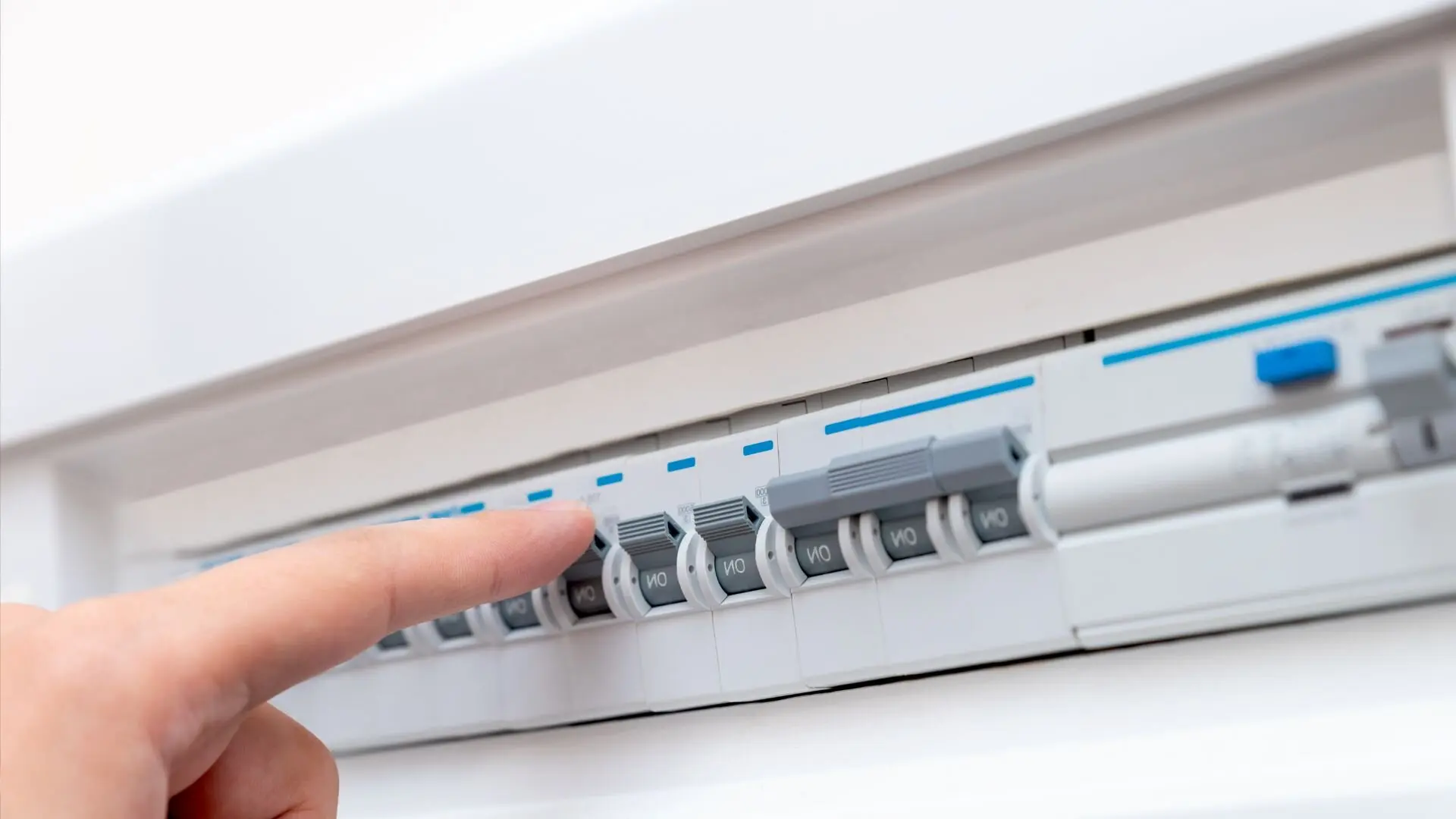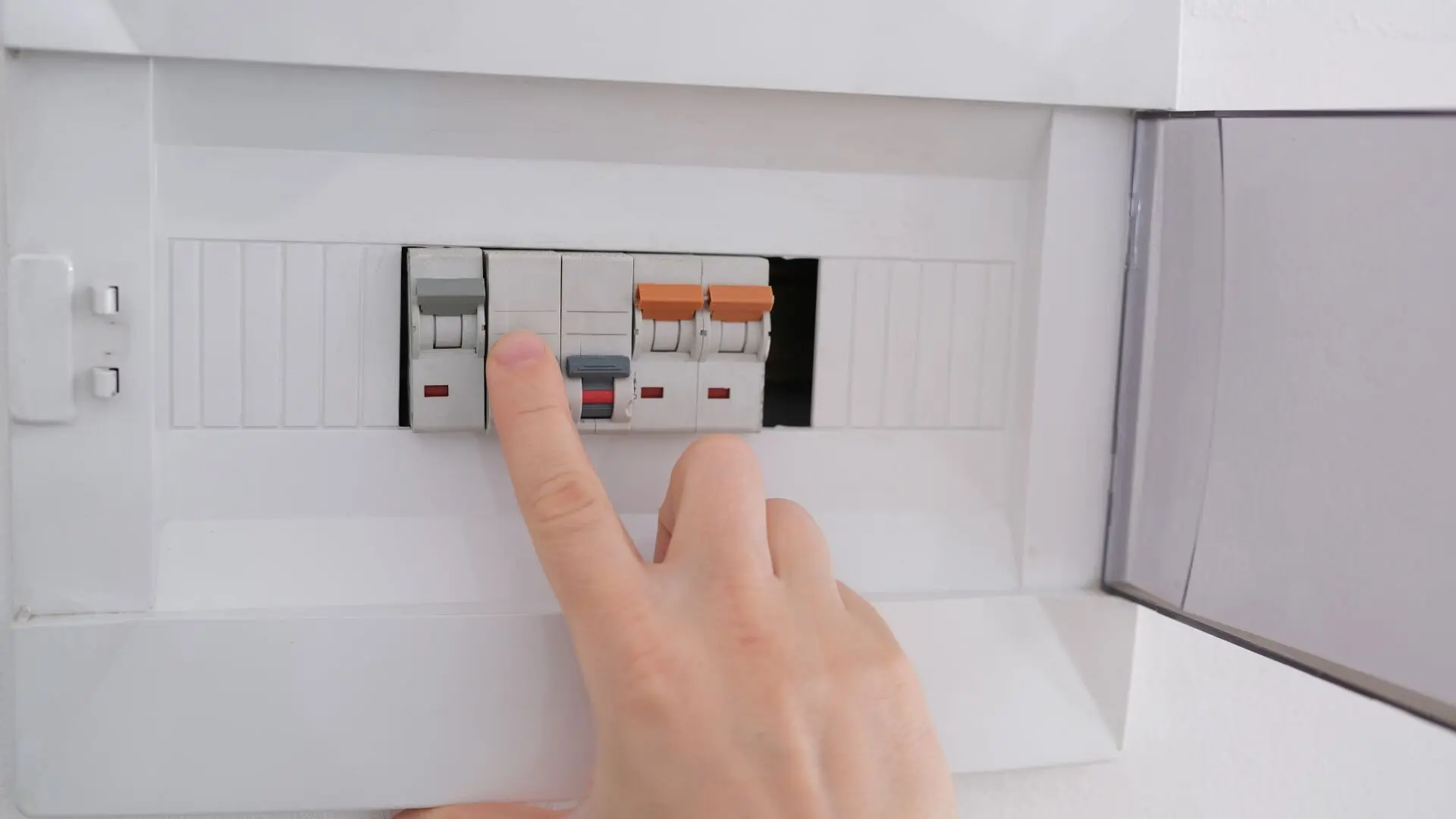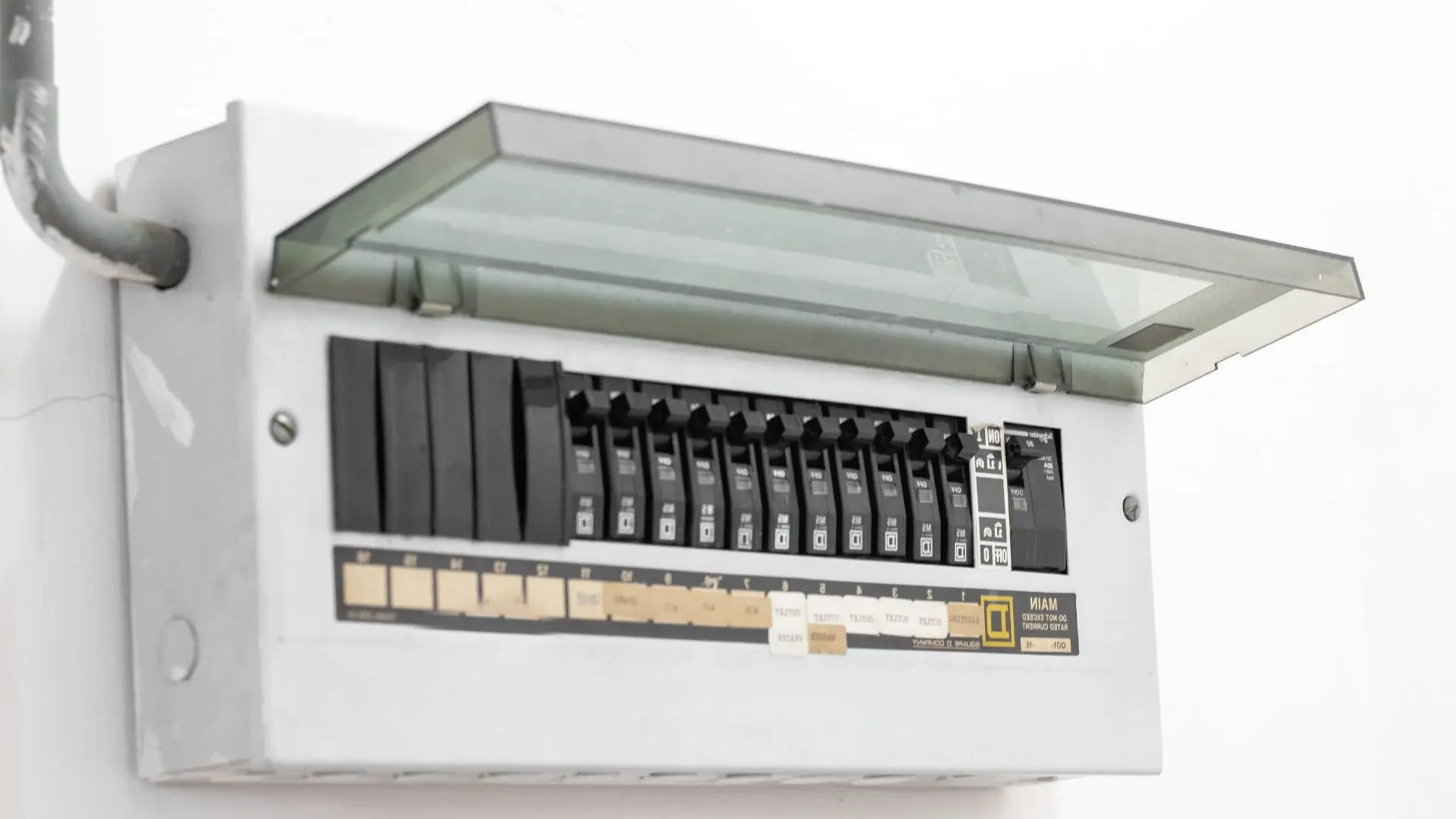Has your circuit breaker tripped, leaving you in the dark? Don’t worry; learning how to safely reset a tripped circuit breaker is a valuable skill every homeowner should possess. This blog post will guide you through the process, ensuring you can confidently restore power to your home while maintaining electrical safety.
We’ll cover the essential topics, including recognising the signs of a tripped breaker and taking the necessary safety precautions before attempting to reset it. So, let’s dive in and equip you with the knowledge to tackle this common household issue easily.
Signs of a Tripped Circuit Breaker
A tripped circuit breaker is often accompanied by tell-tale signs that every homeowner should know how to recognise. Learn more about electrical emergency response safety tips. One of the most apparent indications is a sudden loss of power to specific areas or appliances in your home. If you notice that lights have gone out or electrical devices have unexpectedly shut off, a breaker has likely tripped.
Another clear sign is the position of the switches in your electrical panel. When a circuit breaker trips, its switch will typically be in the off position or a neutral state, halfway between on and off.

If your circuit breaker keeps tripping, even after you’ve reset it, this could point to a more serious issue, such as an overloaded circuit, a short circuit, or a ground fault. In such cases, it’s essential to investigate the cause before repeatedly resetting the breaker, as this can pose a safety risk.
If you’re unsure how to proceed or the breaker won’t reset, it’s best to consult a professional electrician to diagnose and resolve the problem. Remember, a tripped circuit breaker is a safety mechanism designed to protect your electrical system and prevent electrical fires, so always take it seriously when one shuts off.
Safety Precautions Before Resetting
Knowing what to do when your breaker trips is essential. Before resetting a tripped circuit breaker, switch off all light switches and unplug electrical devices connected to the overloaded circuit. This precautionary measure prevents potential electrical fires or further short circuits when power is restored. Once everything is disconnected, locate your breaker panel in your garage, basement, or utility room.
Identify the specific breaker that has tripped; it will likely be in the "off" position or between "on" and "off". Different circuit breakers exist, such as GFCI (ground fault circuit interrupter) and AFCI (arc fault circuit interrupter), each designed to protect against specific electrical hazards.
If the breaker won’t reset or trips again immediately after resetting, a more severe issue might require professional assistance. However, if the cause was a temporary overload, firmly switch the breaker to the "off" position, then back to "on".
If the circuit breaker keeps tripping, refrain from repeatedly attempting to reset it. This indicates a persistent problem that could lead to an electrical fire if ignored. Consult a licensed electrician to diagnose and resolve the underlying issue safely.
Step-by-Step Guide to Reset a Tripped Breaker
When your circuit breaker trips, it can be an inconvenience and a cause for concern. However, it’s important to remember that tripped circuit breakers are a safety mechanism designed to protect your home from electrical hazards. This step-by-step guide will walk you through adequately resetting a tripped circuit breaker.

Step 1: Locate the Circuit Breaker Panel
Your circuit breaker or service panel is usually found in the basement, garage, or utility room. Once your panel is located, open the metal door to access the breakers inside. Some breakers may be labelled, which can help you identify the one connected to the affected circuit.
Step 2: Identify the Tripped Breaker
A tripped breaker will appear in the "off" position or between the "on" and "off" positions. It may also have a red or orange indicator. Carefully examine the breakers to determine which one has tripped. If you’re unsure, look for a breaker that is not in line with the others, as this is likely the one that has tripped.
Step 3: Turn the Breaker Off, Then On
Before attempting to reset the breaker, turn off all appliances and devices connected to the affected circuit. This will help prevent a potential short circuit or overload when power is restored.
Once everything is off, firmly switch the tripped breaker to the off-power position and back to the "on" position. You should hear a clicking sound, indicating that the breaker has been reset.
Step 4: Test the Circuit
After resetting the breaker, turn on the appliances and devices individually to ensure the circuit functions correctly. If the breaker trips again immediately, there may be a more serious issue, such as a short circuit or ground fault. In this case, it’s best to contact a licensed electrician to diagnose and resolve the problem.
If your circuit breaker won’t reset or continues to trip, it’s crucial to identify the underlying cause. Common causes include too many appliances on one circuit, faulty wiring, or a malfunctioning appliance.
Common Causes of Tripped Breakers
When a circuit breaker trips, it’s essential to identify the cause before resetting it. Knowing what can cause a breaker to shut off can help you prevent future occurrences and ensure the safety of your electrical system. Here are three common reasons why your circuit breaker might trip:

Overloaded Circuits
An overloaded circuit is one of the most frequent causes of a tripped breaker. This happens when too many appliances or devices draw power from a single circuit, exceeding capacity.
To avoid overloading, distribute your electrical load across multiple circuits and be mindful of how many appliances you run simultaneously. If you regularly reset tripped circuits due to overloading, consider upgrading your electrical system to accommodate your power needs.
Short Circuits
A short circuit occurs when a live wire comes into contact with a neutral or grounded surface, causing an excessive flow of current. As a safety measure, your circuit breaker can trip. Faulty wiring, damaged appliances, or wear and tear on electrical components can cause short circuits.
If you suspect a short circuit, addressing the issue promptly is crucial, as it can pose a fire hazard. Contact a licensed electrician to diagnose and repair the problem before resetting your circuit breaker.
Faulty Wiring or Devices
Another common reason for a breaker to trip is faulty wiring or malfunctioning devices. Over time, wiring can deteriorate, leading to loose connections or frayed wires that can cause a circuit breaker to shut off.
Similarly, appliances with damaged cords or internal wiring issues can trigger a breaker to trip if you notice your circuit breaker won’t reset or trips repeatedly after resetting, likely due to a faulty wiring or device issue. In such cases, it’s essential to identify and replace the problematic component before properly resetting your breaker to restore power.
Preventing Future Circuit Breaker Trips
While knowing how to reset a tripped breaker is crucial, taking steps to prevent future occurrences is equally essential. Regularly resetting your circuit breaker can indicate underlying electrical issues that require attention. Here are three ways to help prevent your breakers from tripping:
Reduce Electrical Load
One of the most effective ways to prevent your circuit breaker from tripping is to reduce the electrical load on your circuits.
Start by identifying which appliances and devices are causing the breaker to shut off. If you find that certain combinations of appliances trip the breaker, avoid running them simultaneously. Redistribute the load by plugging devices into outlets on different circuits. Consult a licensed electrician if you’re unsure how to reset your breaker or which circuits are adequately overloaded.
Inspect Wiring and Devices
Faulty wiring and malfunctioning devices are common causes of circuit breaker trips. Regularly inspect the wiring in your home, looking for signs of wear, fraying, or damage. If you notice any issues, contact an electrician to repair or replace the affected wiring. Similarly, check your appliances and devices for damaged cords, loose connections, or other signs of wear. Replace any faulty devices to prevent short circuits and breaker trips.
If you’re unsure how to check your wiring or devices, an electrician can conduct a thorough inspection and advise you on necessary repairs.
Consider Electrical Upgrades
If you frequently reset tripped breakers, it may be time to consider electrical upgrades. Older homes may have outdated electrical systems that aren’t equipped to handle the power demands of modern appliances.
Upgrading your electrical panel, adding circuits, or installing dedicated lines for high-power devices can help prevent overloads and short circuits. A licensed electrician can assess your home’s electrical needs and recommend appropriate upgrades to ensure the safety and reliability of your system.
Power Up Your Knowledge: Resetting Breakers Safely
Knowing how to reset a tripped circuit breaker safely is essential for any homeowner in Australia. When your breaker trips, it’s crucial to identify the cause and take appropriate action to restore power and prevent future occurrences. Remember to always turn off appliances and devices on the affected circuit before attempting to reset your breaker. If the breaker continues to trip after being reset, or if you’re unsure how to reset it properly, it’s time to call in the professionals.
At Enersol Electrical, we understand the importance of electrical safety and reliability in your home. As your trusted local electrician, we’re here to help with any electrical concerns beyond resetting a tripped breaker. Our team of licensed and experienced electricians can diagnose and repair issues such as short circuits, faulty wiring, or outdated electrical systems.
We can advise you on upgrades and improvements to ensure your home’s electrical setup meets your needs and adheres to Australian standards.
Don’t let electrical problems cause stress or safety hazards in your home. If you’re experiencing frequent breaker trips, flickering lights, or other electrical issues, contact Enersol Electrical today. We’ll work with you to find the best solution and provide the highest quality service to keep your home safe and powered up. Trust the experts at Enersol Electrical to meet all your electrical needs.